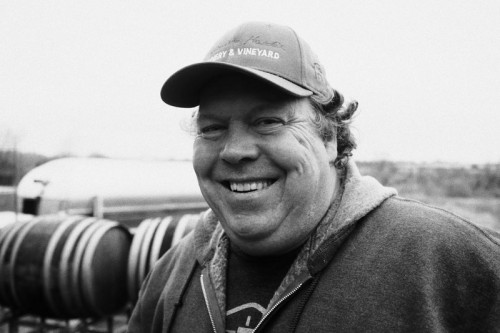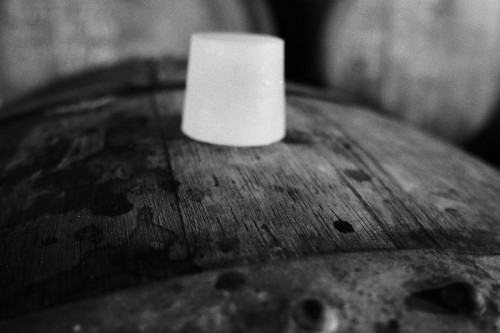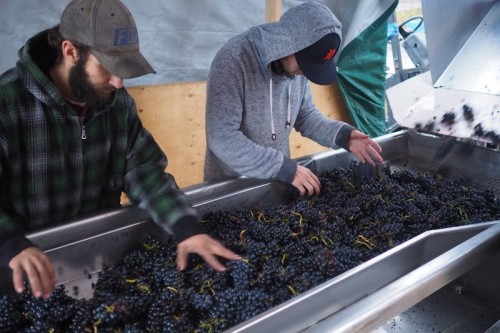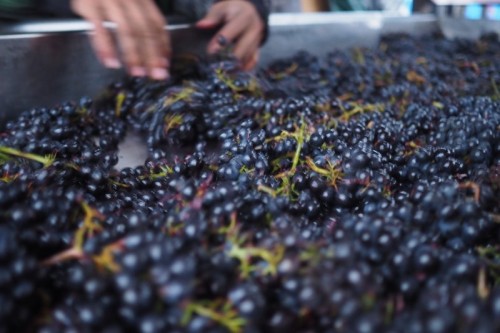
Winemaking is fascinating. Of course, it’s all about the grapes. Once a year you get to harvest them, and the quality of the grapes determines the quality potential of the wine. And while you can’t make great wine out of ordinary grapes, it’s not hard to make ordinary wine from great grapes. So skill, attention to detail and a methodical approach is necessary in the winery.





I spent most of the day shadowing Norm, and seeing just how he keeps in his head every ferment that’s taking place in the winery. The attention to detail here is astonishing. He knows exactly what he wants, and the harvest crew here seem to be really focused on getting it right.
One of the key tasks is monitoring the ferments. Tank 2, which is Sauvignon Blanc (a new grape for Norm), is slowing down and beginning to smell a little reductive (each ferment is monitored daily, and brix levels and temperature are recorded – a decline in temperature and a slowing down of the decline in brix suggests the ferment isn’t going so well). So the decision is taken to rack it to a new tank, then rack it back, adding a bit of Fermaid (yeast nutrient). Some other tanks aren’t starting fermentation, so they might be warmed up, or inoculated with cultured yeasts. The barrels are monitored in a similar way, until they are dry.
There’s also a lot of logistics in winemaking, especially when space is at a premium. Picking decisions are critical in wine quality, and so when grapes are arriving, they need a home.







One of the main tasks of the day was processing some Syrah and Cabernet Franc for rosé production. The grapes had arrived a couple of days earlier, but because of the low temperatures (it’s November in Canada!), and the fact that they were whole bunches, hand picked, there is no vast hurry to process them. These were from the county, and they hadn’t got ripe enough for red wine production, with around 18/19 Brix and very high acidity. But they are perfect for rosé.
So they are tipped, slowly, onto a vibrating sorting table. This is so they can be sorted, but these grapes are in very good condition without any rot, so little sorting is actually needed. But ladybirds can be a problem in Ontario, and just a few of them in the ferments can cause a green-tasting taint. This is where the vibrating sorting table proves its worth, because it gets rid of any that might be present on the clusters. Many growers will spray shortly before harvest in order to cut down the numbers of ladybirds when it’s a difficult year for them, like this one.

Here’s a short film of the process:
“adding a bit of Mermaid (yeast nutrient)”. Mermaid might add that elusive sexy note, but it is actually Fermaid. http://www.scottlab.com/product-104.aspx
Yes! Autocorrect. Thanks for the spot. I like the idea of mermaids in ferments